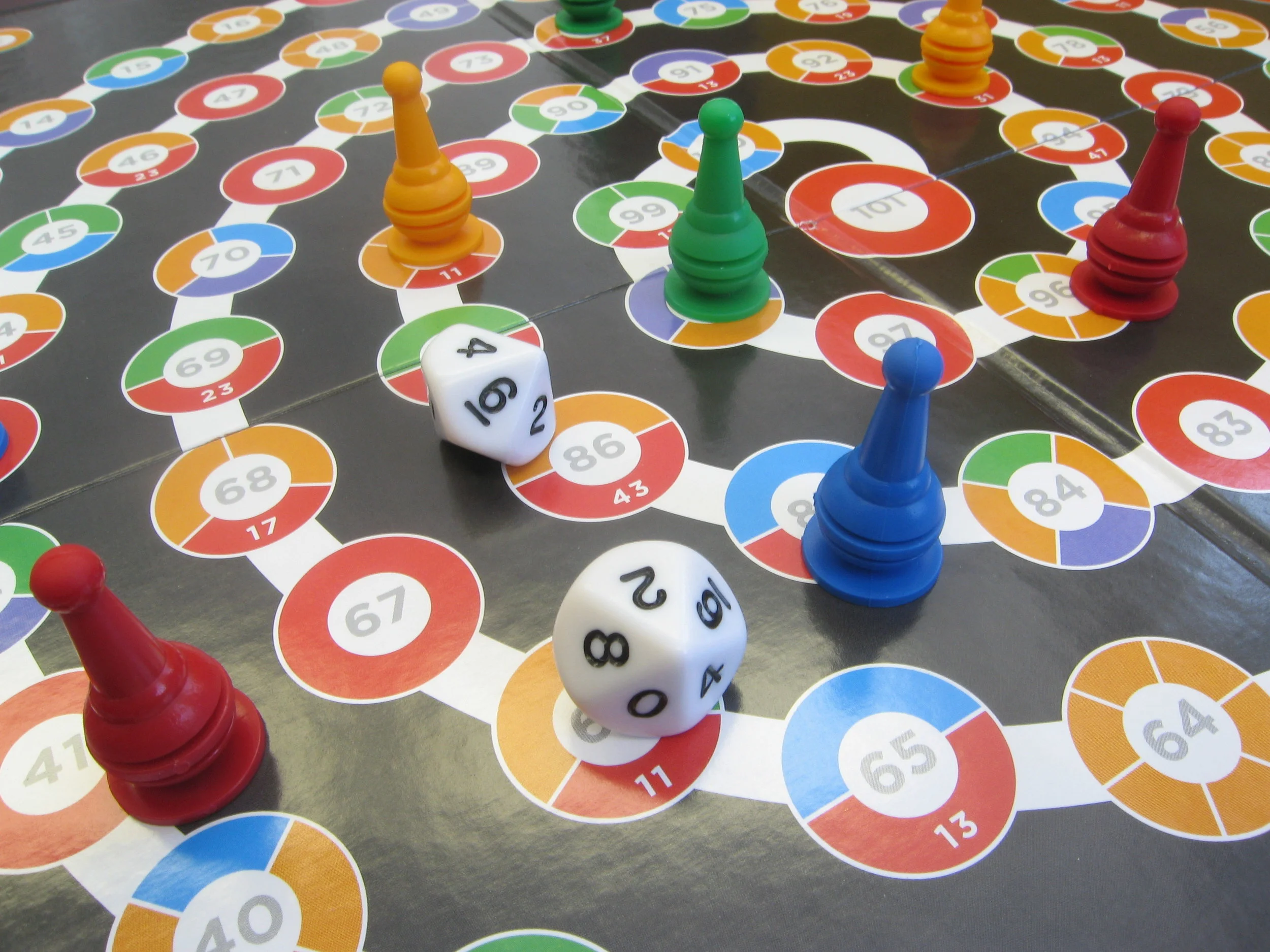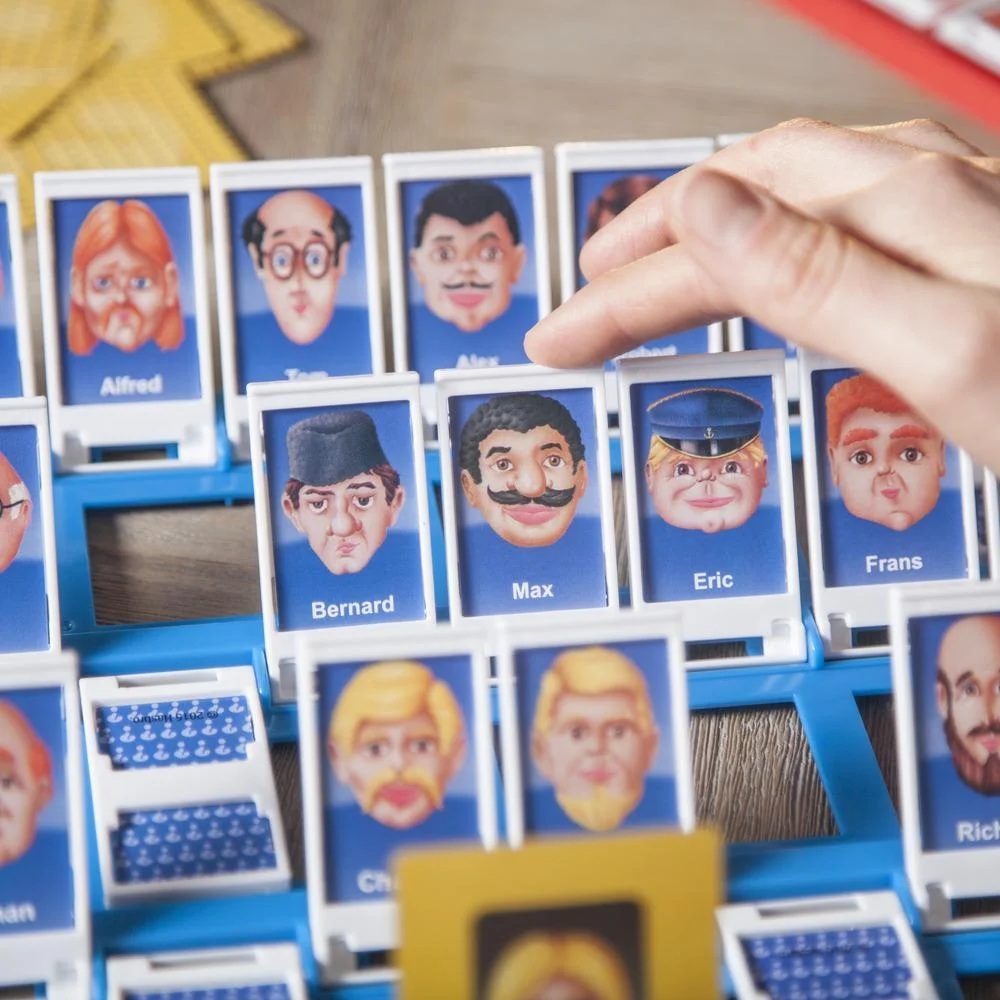If you've been reading Games for Young Minds since the beginning, you know one of my absolute favorite games is Blokus. The game is incredibly easy to learn, accessible to kids of almost all ages, and still fun for adults.
I've been wanting to share the game again, especially since my readership has grown so much since November 2017! Fortunately, I have just the excuse: Over the winter holiday, I came up with a fun, cooperative twist on the game that has been a big hit at home.
So let's visit, or revisit, one of the greatest little games out there.
When you play Monopoly with your kids, let them be the banker. Yes, I know, this will make the game even longer. It's worth the wait.
Kids today need as much exposure to handling money as possible. Maybe you're unconvinced: with credit cards and Venmo, kids don't need to learn how to make change and count bills anymore, right?
I fully disagree. In fact, I think the opposite is true: In previous generations, parents and kids had numerous opportunities to talk about math while paying for groceries or settling up at the pharmacy. Kids naturally gravitate to these shiny coins and green slips of paper, and their questions gave parents a chance to talk about how pennies convert to nickels and how $1 bills compare to $20s.
As I type this, my son is playing Monopoly with his closest friend. I'm elated for two reasons. First, he's doing a ton of mathematical thinking right now. And more importantly, I don't have to play.
Maybe you've wondered why it's taken me over a year to write about the most famous board game of all time. Honestly, it's because Monopoly just isn't my favorite game. The first 20 minutes or so are fun, as you collect properties and try to negotiate trades with your opponents.
But after that, a sense of dread sets in as you realize that one player lucked into a much better set of properties than the others, and it's just a matter of time before they win. But when I say time, I mean time. Games can last two hours, and usually the person on the bad end of a bankruptcy feels pretty miserable for the last hour or so, as they barely pull their way out of poverty, only to slide back down due to a bad roll of the dice.
(It's almost like the creator of the game was making a point about capitalism!)
But my son loves the game, and his love of the game has made me re-evaluate Monopoly and think of ways to keep the fun and the math, while removing a bit of the grind. In next week's newsletter, I'll spend the whole time talking about the role of the banker. This week, I'll focus on the dice, the board, and the proper way to play Monopoly.
Sometimes I am deeply grateful that my son is just as interested in board games as I am. Other times, I feel like I've created a monster.
The kid wakes up at 6am on the weekends and jumps on my bed, waking me up with "Chess?"
"You know, I'm probably going to need a second to wake up before we launch into any games."
"Ok, so then after you have coffee we can play?"
Clearly he understands the concept of checkmate.
All of that to say, my son's most recent obsession was the game Patchwork, which I got him for Hanukkah. It's a great game for us to play, since it's specifically designed for two players and has enough strategy to keep me guessing. We've probably played it between 15 and 20 times in the past month, and I'm still happy to play whenever he wants.
As long as I've had my coffee.
This week, I'm sharing one of the games from my Holiday Gift Guide. I hadn't intended to write about Kingdomino so soon, but my son just can't get enough of the game. As it happens, I was able to capture some great video of him thinking through some of the math in the game, and I couldn't resist sharing.
Kingdomino is a great game for two, three or four players, but my son and I both prefer the two-player version. The strategy gets harder, the scores go higher, and there seem to be more ways to win.
Looking for a gift for your kids that's fun, but perhaps a little more intellectually stimulating than the Nerf MurderGun 5000 or Princess Daenerys's Glitter-Shedding Dragon? Don't worry, Games for Young Minds has got you covered.
Below, I've shared two games for each age level: One game that I've profiled previously, and a new game that I haven't gotten the chance to write about. No matter what age your child or what games they've played before, you should be able to find something useful below. Enjoy!
Have you ever played one of those people in Scrabble who knows all the two-letter words?
I'm not talking about "it" and "he." I mean someone who confidently plays "qi" and then dares you to Google it.
My friend Robin is one of those people. I have played her in Scrabble since high school, and I have no idea how many times I've lost to her. But I definitely remember how many times I've won: zero.
Don't get me wrong, Scrabble is a fantastic game. Someday I'll probably write a newsletter (or three) about it. But it does pose a problem, especially for parents: How do you play a word-based game with a kid (or friend) with a much lower vocabulary than you? What if your kid can't even read or spell yet?
Fortunately, I have found the perfect introductory game to the fun and strategy of Scrabble: Qwirkle. If you play Qwirkle with your five-, six-, and seven-year-olds, they'll be totally ready to dive into Scrabble as older kids.
I'll admit it: this week's game is for older kids.
I've been holding onto this game, Prime Climb, for over a year, just waiting to see when my kids would be old enough to play. I even tried a modified version with my 6-year-old son, but it just didn't work. To get to the heart of this game, you really need to know the ideas of multiplication and division. I'd recommend this game for kids who are at least in 3rd grade.
The good news is, the game is just as fun with older kids and with adults. I was able to buy a class set of Prime Climb games for my math games elective, and my 8th graders absolutely loved the game. They got to use math creatively in a way that they rarely have, and I had just as much fun as they did.
In school, math often feels like a set of procedures that you must perfectly mimic. But in Prime Climb, you are free to be as mathematically creative as you want.
A few weeks back, I did a celebratory Q&A for my first 1000 subscribers. I had such a fun time writing my answers that I kept an eye out for other questions about games, math, and parenting.
Well, last weekend I was talking with another parent about birthday presents when they hit me with a question I just had to answer in the newsletter. So here we go!
Read MoreAlison asks:
I've noticed that you always seem to recommend games to kids who are on the younger side: the box recommends players 8 and older, but you'll recommend it for 5 or 6 year olds. Why is that? Won't the kids get frustrated by a game that's too hard for them?
Often, when I teach my kids a game, we play a couple of "face up" rounds, where everyone can see each other's cards or pieces. During the game, we talk freely about every player's options, as well as strategies that might pay off in the future.
As I've begun playing games with more and more kids, I've come to realize that face-up variations of games are just as fun! Instead of patiently waiting my turn, I am able to engage my kids in a conversation about what their possible goals might be, and how they can reach those goals.
I'd like to illustrate this idea by discussing the game Rummikub, a classic tile-based game that I was introduced to on a family beach trip this past summer.
I played a lot of classic board games as a kid, but I got sick of them eventually. It seemed like a dead hobby: once you got sick of Monopoly, Scrabble, and Risk, what else was there?
Then my uncle brought Sequence to a family gathering and I fell in love with games again. I particularly enjoyed playing in teams, trying to work together with my partner without any direct communication.
My kids are a little too young for Sequence, especially my 3-year-old. Fortunately, the makers of Sequence have come out with Sequence for Kids, a game that keeps the spirit of the original game while making the rules accessible for kids as young as three.
Do you still remember the faces from the original Guess Who game? I do. The big noses, the rosy cheeks. The...interesting skull shapes.
I mean, just look at Bill. Poor Bill. The guy looks like a pink raindrop with facial hair. I mean, he's a happy pink raindrop with facial hair, but still...
The game has gone through several much-needed printings since the 80s, adding more women and people of color to the mix. But you can still find the classic version if you so choose.
And I do recommend that you find a version you like, because your kid will definitely want to play Guess Who? a bunch! There's a reason the game was such a smash hit when it came out 30 years ago: the rules are simple, the play is quick, and the competition is fierce!












